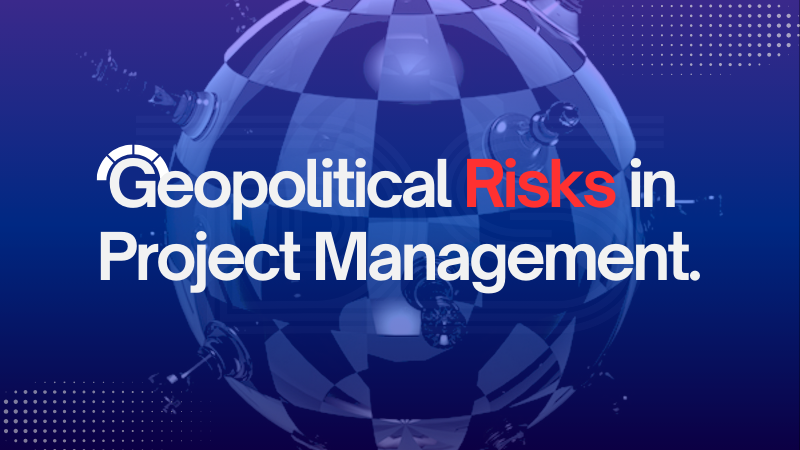
Geopolitical Risks in Project Management: Strategies & Case Studies
In today’s incorporated global economy, top-level project managers must navigate a more complex environment shaped by geopolitical risks. Economic instability, supply chain interruptions, unpredictable politics, and regulatory changes no longer represent small problems; rather, they create significant roadblocks that can make or break businesses. As businesses expand globally, they find that strategic risk management becomes more crucial.
In project management, uncertainties like international conflicts, diplomatic tensions, political choices, and economic policies are referred as geopolitical risks. In a recent Project Management Institute (PMI) survey, more than 60% of international project managers cited geopolitical instability as an imminent threat to project performance. Furthermore, McKinsey’s 2023 Global Risk Report emphasized how challenges associated with compliance and regulations compel companies to re-evaluate their plans.
This article will examine how businesses effectively address geopolitical risks by utilizing case studies from sectors including technology, infrastructure, and energy. In addition, during geopolitical risks, leadership insights and best practices will provide practical methods for reducing risks and ensuring project continuity.
Geopolitical Risks in Project Management
Project managers in today’s rapidly changing world must navigate geopolitics, budgets, and schedules, as well as potential risks like policy changes and economic downturns. Early identification of these risks and getting prepared for the solution are crucial for project success by ensuring a smooth execution of plans.

Geopolitical Risks in Project Management
Some instances of geopolitical risks are:
A 2024 Beazley Risk & Resilience research states that 33% of business executives, up from 27% in previous years, said that political risk, particularly political violence, was their primary concern. Similarly, the World Economic Forum’s 2023 Global Risks Report stated that two of the biggest issues confronting companies today are economic instability and regulatory unpredictability.
Factor geopolitics into technology strategy
The factor of geopolitical risk in technology strategy as per the EY-Parthenon stresses the urgent relevance for CEOs to incorporate geopolitical risks into their technology and digital transformation strategies. While CEOs may recognize the importance of technology and digital innovation, they underestimate the impact of geopolitical factors on their operations.
The four main geopolitical risks to be prioritized are:

Geopolitical risks are reshaping digital strategies. Learn how leaders can future-proof tech investments with informed risk management.
· Cybersecurity threats: Geopolitically motivated attacks could steal sensitive data and continue to disrupt operations. Firms now have the chance to invest in some strengthening of their cybersecurity controls and employee knowledge to deal with the threats.
· Technological regulations: Divergent rules on technology between countries will heighten complexities in globalization. The relative impact of this divergence on its global presence and localized technology solutions can be used to build greater resilience.
· Supply Chain Vulnerabilities: Geopolitical tensions could disrupt supply chains, especially in cases where a supply chain depends on technology coming from a specific region. This risk can be mitigated by diversifying suppliers and assessing the geopolitical stability of sourcing regions.
· Data Sovereignty Issues: Data protection laws vary from country to country. Hence, it is essential to know those laws and operate within the country’s legal proceedings to avoid any legal complexity and maintain the integrity of the operations.
To effectively handle such risks, it is recommended that the risk management teams should find the solution by:
·Analyze Technology-Specific Geopolitical Risks: Identify and track politically driven risks to current and prospective technologies at all levels: geopolitical, country, regulatory, and societal.
· Assess System Resilience: Collaborate with operations and compliance teams to understand how differing regulatory standards in key markets affect the company’s international presence and determine whether localized technology and data strategies would make it more resilient.
· Engage Leadership: Educate the C-suite and board of directors on geopolitical risks to technology investments, so decisions are made in an informed manner and risk management is effective.
Here are the geopolitical risks which has been explained in details:
1. Political and Economic Instability: Its Impact on Projects
Political and economic volatility can significantly impact project managers, as sudden changes in financial stability, governance, or policy can disrupt project execution, increase costs, and make decision-making unclear. The interconnectedness of the world’s economy makes it crucial for leaders to adjust and plan their strategies accordingly. Examples of political volatility include government instability, policy changes, trade restrictions, and diplomatic disputes.
Economic volatility is caused by trade restrictions, inflation, interest rate changes, and currency movements. According to a recentWorld Bank analysis, financial instability has a direct influence on business investment choices, which has led to an increase in global economic uncertainty over the previous ten years. The Atlanta and Richmond Federal Reserve Banks, in partnership with Duke University, conducted a survey in 2024 that found that about one-third of financial officers had delayed or reduced their investment plans because of the uncertainty surrounding the U.S. presidential election.
How Projects may be directly impacted by such volatility?
- Overspending brought on by inflationary pressures and growing material costs.
- Delays in purchases brought on by trade barriers and currency depreciation.
- Risks to regulatory compliance brought on by abrupt changes in policy.
- Market volatility causes the viability of projects to fluctuate.
2. Regulatory and Compliance Challenges
Project managers find navigating regulatory and compliance complexities increasingly challenging due to evolving regulations across jurisdictions. Consilio’s survey revealed that 60% of legal, risk, and compliance professionals prioritize operational reinventions to manage escalating workloads, primarily because the overwhelming volume of work arises from increasing data complexities and stringent global regulations.
Key challenges in regulatory compliance include:
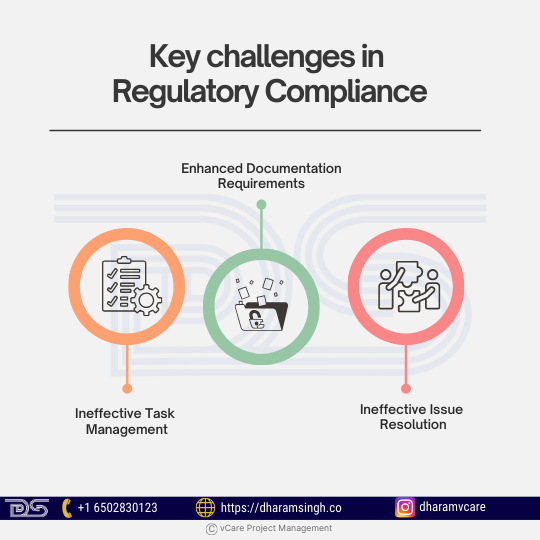
Organizations face increasing pressure to improve compliance coordination, documentation, and issue resolution in today’s regulatory landscape.
- Ineffective Task Management: Due to a lack of departmental visibility and coordination, organizations frequently struggle to ensure the timely execution of compliance-related activities.
- Enhanced Documentation Requirements: Regulators demand strong data management and reporting systems because they require thorough documentation and audit trails.
- Ineffective Issue Resolution: Inadequate departmental communication and prioritization can cause delays in resolving compliance-related concerns.
To effectively manage these complexities, the following strategies can help organizations implement:
Constant Monitoring of Regulatory Changes: Create procedures to keep abreast of changing laws and enforcement patterns, ensuring that teams promptly modify compliance strategies.
- Impact Evaluations of New Rules: Regularly assess how new rules affect current operations and procedures to enable proactive compliance changes.
- Allocating Resources for Compliance-Related Activities: Ensure that you have enough money and staff to support compliance efforts and effectively handle regulatory obstacles.
By using these tactics, project managers can negotiate the complex regulatory landscape more effectively, ensuring that they complete projects successfully and comply with changing requirements.
3. Supply Chain Disruptions and Resource Dependencies
Supply chain disruptions in project management refer to the unforeseen interference with the flow of materials or resources that are usually experienced due to supplier problems, logistics, or other external conditions like natural disasters. Since project management relies so much on specific materials from a very limited pool of suppliers, such supply chain disruptions may unnecessarily prolong the project timeline and increase the cost.
Over 80% of supply chain executives think that issues will persist or worsen shortly, and most have experienced at least one disruption in the past 12 months, according to an Oracle survey. Also, in a study by McKinsey & Company, organizations adopt high-tech planning, execution, and risk management as they accelerate their efforts to diversify and localize their supply networks.
Project managers can be proactive about weaknesses in the supply chain and implement robust plans to ensure that projects are delivered effectively even in uncertain situations.
Tricks for risk mitigation are:
• Disruptions can be caused by political, trade, sanctions conflicts, natural disasters, pandemics, labor shortages, and transportation challenges.
• Mitigating disruption risks involves diversifying suppliers, investing in technology, building flexibility, and strengthening relationships.
4. Digital sovereignty, data security, and cyber security risks
As the digital landscape continues to grow, the corporate community has made cybersecurity, data protection, and digital sovereignty its top concerns. Therefore, protecting sensitive data and maintaining operational integrity becomes crucial in the face of advanced cyberthreats and evolving data privacy laws.
a. Cybersecurity Threats
Artificial intelligence (AI) advancements have contributed to the dramatic rise in cybercrime. According to the World Economic Forum’s Global Cybersecurity Outlook 2025 study, geopolitical tensions have increased the frequency and potency of cyberattacks directed at enterprises and governments. The study highlights the necessity for businesses to adopt a “zero trust” architecture in order to increase resilience against these threats.
b. Data Protection Challenges
According to a global survey commissioned by Yubico, over half of working people have fallen victim to hackers or scams, with 45% reporting compromised personal data. Despite these extremely concerning figures, a large percentage of respondents acknowledged that they reacted to threats rather than taking proactive measures to secure their data in both the personal (45%) and professional (44%). As a result, it is even more crucial for companies to implement strong data protection policies and proactive security measures.
c. Digital Sovereignty Considerations
Digital sovereignty is the ability of a country or organization to control its own digital data, technology, and infrastructure. According to a TNO study paper, maintaining control over one’s economic, social, and democratic future will be based on attaining digital sovereignty in cybersecurity. In order to close gaps in strategic autonomy, the research suggests developing the necessary cybersecurity skills and competences.
Key Strategies for Organizations to overcome these threats:
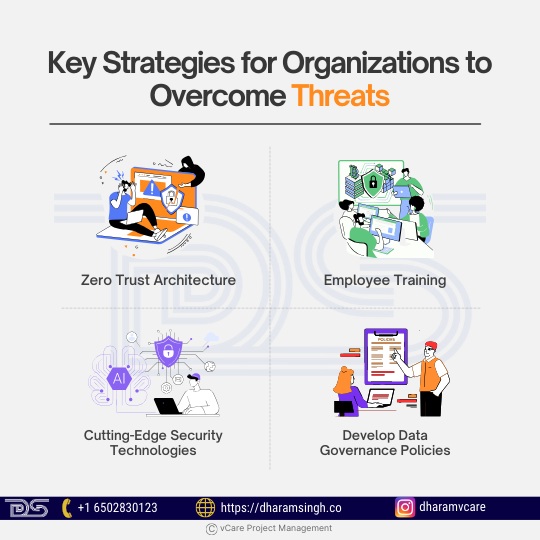
Implement zero trust, data governance, AI security, and employee training to reduce cyber and compliance threats effectively.
· Zero Trust Architecture: Reduce the chance of unwanted access by implementing a security architecture that demands stringent verification for each user and device trying to access resources.
· Employee Training: Conduct regular cybersecurity awareness training to teach staff members how to spot and handle any attacks.
· Cutting-Edge Security Technologies: Use AI-driven security solutions to identify and address threats instantly to improve overall security posture.
· Develop Data Governance Policies: Define data management policies that remain in control over data assets, ensuring compliance with international data protection laws.
By prioritizing cybersecurity, data protection, and digital sovereignty, an organization may reduce the risks of cyberattacks and rule disobedience. In this manner, they would be protecting their operations and reputation in a world that is getting more interconnected by the day.
There are strategic risk mitigation techniques that should be employed in order to overcome uncertainties and ensure long-term success in the many threats that firms face in today’s changing business environment.
Here are some of the major Strategies for Risk Mitigation:
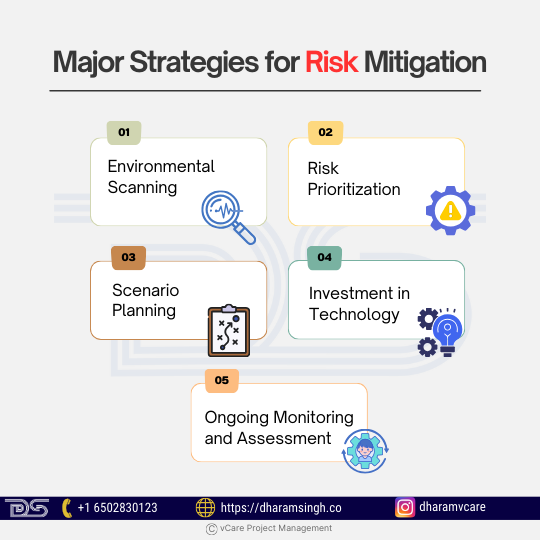
Organizations can manage uncertainty and enhance resilience by adopting key risk mitigation strategies such as environmental scanning and scenario planning.
· Environmental Scanning: As threats can be better confronted early, companies should monitor external factors like market trends, regulatory changes, and technological advances regularly. This would allow them to anticipate challenges and make corresponding adjustments.
· Risk Prioritization: Risk prioritization lets companies use their resources properly, focusing on severe risks first. Analyze hazards based on the feasibility of their happening and their potential impact.
· Scenario Planning: Prepare several scenarios that outline possible future events and consequences. This technique enhances decision-making in uncertain times and helps organizations prepare for a range of circumstances.
· Investment in Technology: Apply risk management tools and advanced analytics to collect current information on any potential threats. Technology may aid in the early spotting and provide data-driven risk mitigation solutions.
· Ongoing Monitoring and Assessment: Establish a structure for ongoing risk management and assessment. Regular assessments ensure that mitigation strategies remain effective and are updated based on emerging trends.
Companies are now increasingly integrating risk management into strategic planning processes for better resilience, as a detailed Deloitte survey reveals. Moreover, the PwC Global Risk Survey reveals that the involvement of board members and business leaders in the risk management process through strategic decision-making ensures that risk insights inform important business decisions and foster a proactive risk culture. Implementing these strategic risk mitigation approaches enables organizations to better navigate uncertainties, safeguard their assets, and achieve their long-term objectives.
Case Studies: Insights from Managing Geopolitical Risks
Geopolitical risks would have a deep impact across different industries: at the strategizing level as well as at the operational level of an organization. Case studies where companies successfully manage geopolitical risks can be very informative about effective strategies. Here are ten examples:
1. Financial Services Firm in Dealing with US-China Tensions
With rising tensions between the United States and China, one of the leading financial services firms in Asia-Pacific took an even more proactive step by engaging with EY-Parthenon to guide them through these complexities. Senior leadership strategy workshops and scenario planning were used to uncover key risks and develop robust strategies for business disruption. This proactive strategy allowed the company to foresee obstacles, modify its operating structure, and protect its commercial interests in the face of geopolitical unpredictability. The firm improved its readiness and obtained a competitive advantage in an uncertain market by incorporating geopolitical risk management into its fundamental strategy. The partnership with EY-Parthenon provided leadership with valuable insights that promoted flexibility and well-informed choices. This success story demonstrates that well-thought-out plans may transform geopolitical concerns into opportunities for development and stability, underscoring the need for proactive risk assessment and strategic foresight in maintaining corporate resilience.
2. Multinational Corporations manage Reputational Risk Amid Geopolitical Conflicts
Geopolitical conflicts, specifically the Israel/Hamas confrontation, have brought yet another wave of reputational challenges to multinational businesses. These groups must operate complex political landscapes by maintaining stakeholder trust. Stakeholder sentiment continuous monitoring is well addressed by Conference Board’s China Centerthrough various data-driven findings. Such a proactive approach can help businesses detect and counter possible reputational risks before they build up. An informed and responsive multinational corporation is better placed to maintain its integrity, safeguard the image of the brand, and prove resilience at a time when global conflicts increasingly affect corporate reputation.
3. Strengthening European enterprise resilience towards geopolitics.
The World Economic Forum report says European companies are acting aggressively to drive resilience amid increasing geopolitical uncertainty. Companies are focusing on agility and preparedness, not missing the opportunity to quickly adapt to change in global dynamics. Strategies include comprehensive risk assessments, robust risk reduction plans, and protective measures such as ring-fencing critical business functions. There is also the rapid response framework established to ensure there is smooth operation continuity. All these proactive steps taken by the European enterprises will not only be protecting their interest but also securing stronger long-term competitive positions as they demonstrate stability and strategic vision in an unstable global environment.
4. International Companies Practice Three-Locus Risk Analysis
According to McKinsey & Company, leading global firms are using a three-locus risk analysis in dealing with geopolitical uncertainty. Through observation of risks along the short-term, mid-term, and long-term horizons, an organization achieves a dynamic and forward-looking perspective that provides for better resilience. Such an approach gives a firm the strength to react effectively and in real-time to a shifting global scenario, make strategic investments, and minimize possible interruptions. A proactive position on risk management will allow firms to protect and strengthen operations with stability, all while seizing on emerging opportunities across geopolitical shifts, thus guaranteeing sustained growth as well as agile performance in ever-changing international business landscapes.
5. Financial Institutions Managing the Geopolitical Risk
Deloitte highlights that geopolitical risk is a threat that financial institutions face highly adversely. During these uncertain global times, companies have to be strong by devising a proper framework for risk management. Undoubtedly, a one size fits all, but preparedness in the form of scenario planning, regulatory compliance, and diversified investments would help correctly position itself amidst unpredictable geopolitical scenarios. Financial services companies can avoid such distractions, protect their assets, and become stable by using agility and information. Forward-looking geopolitical risk management makes sure that institutions are resilient, adaptable, and well-positioned for sustained success in an ever-evolving global economy.
6. Organizations Use Geopolitical Risk as a Source of Strategic Advantage
An Forward-looking companies are turning geopolitical risks into strategic opportunities through a risk analysis approach designed by the Boston Consulting Group. Instead of fearing uncertainty, firms use it to identify the growth and resiliency opportunity of risks assessed. The tool will guide a firm through uncertain geopolitical terrain while perfecting the strategy for greater competitiveness. Proactive management of risks is bound to make the organizations take better decisions, fortify their global positioning, and transform challenges into innovation catalysts. Companies can future-proof their operations, ensure sustainable success, and thrive in the increasingly dynamic global environment through embracing geopolitical risk as a strategic lever.
7. Risk Managers play Key Roles in Geopolitical Strategy
According to WTW, risk managers are now becoming critical geopolitics architects. Applying case studies and scenario-based analysis, they can enable the organisation ahead of the geopolitical shock: prevent, predict, and prepare. Risk managers equipped by proactive approaches in risk management help businesses operate in uncertainty, secure operations, and make even potential threat opportunities. Strategic insights of a risk manager encourage resilience, enabling firms to be flexible and adaptive to unknown external influences within the global political scenario. As businesses begin to realize the value of geopolitical foresight, risk managers assume a crucial position in determining the long-term stability and success, which further establishes their indispensable role in corporate strategy and risk mitigation.
8. European Firms Mitigate Dependency on Critical Inputs
European companies are aggressively de-risking their dependence on critical inputs to avoid the consequences of over-reliance on suppliers from China. Eurosystem central banks surveys show that there is still much exposure, leading businesses to implement de-risking strategies. By diversifying their supply chains and sourcing critical inputs from within the EU, firms are building resilience and reducing vulnerabilities. This proactive shift not only strengthens supply security but also promotes regional economic stability. By giving strategic supplier diversification a high priority, European enterprises are bolstering their resilience, ensuring business continuity, and positioning themselves for long-term success in an increasingly uncertain global trade environment.
9. Pharmaceutical Companies Start Improving their Supply Chain Vulnerabilities
Pharmaceutical companies are now taking some pretty bold strides toward securing and hardening their supply chains with a view of escalating geopolitical risks. Identifying this imperative necessity in terms of an uninterrupted availability of life-saving medicines, firms diversify the production locations while seeking strategic, one-on-one ties. Through such actions, these firms curtail reliance on one single-source vendor and enlarge production capabilities at numerous places across geographies in efforts to gain a greater robustness against eventual stoppages. This proactive approach would ensure that, even in situations of geopolitical instability, all such essential medicines remained accessible. Thus, innovation and collaboration are ways by which pharmaceutical companies safeguard public health, strengthen their commitment to global healthcare security, and achieve supply chain sustainability.
10. ECB Develops Framework to Assess Geopolitical Risks for Banks
The European Central Bank has been pioneering and innovative in strengthening the banking sector against geopolitical risks through designing a comprehensive risk assessment framework. As a response to the unfolding of new global tensions-in this case, changes in sanctions on Russia-this initiative stands ready to prepare banks for any kind of eventualities and ensures the strength of their resilience. The ECB thus equips financial institutions with relevant insights about geopolitical risks that can help them navigate disruptions, ensure stability, and protect their economic integrity. The proactive approach would strengthen the banking sector’s capacity to withstand shocks while reinforcing its adaptability, thereby still garnering continued trust and confidence in Europe’s financial system within an increasingly unpredictable global landscape.
Major highlights from the Case Studies and Lessons from Geopolitical Risk Management are:
- Scenario Planning: This is proactive where the organization prepares and analyzes different geopolitical scenarios and prepares for future risks and appropriately responds to those risks.
- Stakeholder Engagement: Informing and keeping track of the public’s view may make reputation risks manageable.
- Investment in Resilience: This would be resource allocation towards developmental adaptability and response, and will be one of the primary enablers for dealing with geopolitical uncertainties.
- Decisions Based on Data: Utilization of data analytics in strategies increases the ability of an organization to take data-driven decisions, and makes risk management more effective.
These examples give any organization the fundamental strategy in how to manage geopolitical risk and ensure continued success in an unstable world.
Insights and Good practices of Leadership Perspectives and Effective Practices
Effective leadership is the primary key to guiding through the tough times of today’s dynamic and complex project environment. Recent research has brought important insights and good practices that would help enhance the success of projects:

Effective leadership blends adaptability, emotional intelligence, and continuous learning to drive project success in complex environments.
1. Adopt adaptive leadership
The Project Management Institute, in the “Pulse of the Profession” report, highlighted that adaptive leadership is one of the critical cornerstones for success in a dynamic landscape. Such leaders with an open heart for flexibility and change are equipped to effectively respond to uncertainty. In turn, their teams would remain resilient, innovative, and forward-focused amidst a dynamic environment.
2. Promote Effective Communication
Effective communication forms the heart of good project management. According to a Journal of Organizational Excellence, communicating project managers avoid closed and inconsistent forms of communication, which tend to create stronger collaboration and improved output in projects. Clarity, transparency, and engagement empower teams, ensuring alignment, efficiency, and success in every phase of a project.
3. Use of Technological Tools
Embracing technological tools changes the dynamics of project management by streamlining how things are done and improving collaboration. A global leader in crane and lifting solutions, Palfinger, used Smartsheet to align different departments and streamline workflows-that significantly improved its project management capabilities-becoming an enormous success story that showcases how digital tools can facilitate smooth coordination and operational excellence.
4. Continuously Learn
Lifelong learning is the road to leadership greatness. According to the 2021 Annual Leadership Development Survey Report, continuous professional development is considered a critical method of staying in front of rising challenges. Therefore, through continuing education and the best practices embraced by leaders, they improve adaptability, develop their skills sharper, and ultimately drive sustainable success in the midst of constant evolution.
5. Emotional Intelligence
Effective leadership is based on emotional intelligence. Its critical importance in promoting positive team dynamics and project performance is highlighted by research. A resilient and high-performing work environment that flourishes in the face of adversity is created by leaders who comprehend and control emotions, both their own and those of their team.
Conclusion: Steering Projects Through Geopolitical Risks for Success
Geopolitical risks are highly complex and broad in project management and include political and economic uncertainty, legal problems, a disturbed supply chain, and cyberattack issues, among many others. However, under good leadership with specific strategic ways to mitigate geopolitical risks, opportunities exist to harness those risks toward better resilience and growth.
This means a proactive understanding and definition of geopolitical risks within the project landscape. Leaders need to recognize the effects of political and economic volatility, changing investment climates and disrupted project timelines. Regulatory and compliance complexities require due diligence and strict adherence to shifting legal frameworks across jurisdictions. Dealing with supply chain disruptions requires diversification, reshoring strategies, and stronger partnerships to ensure resource stability.
In this age of cybersecurity and digital sovereignty, data protection and security of digital infrastructures have become the highest priorities. Organizations can protect operations through advanced security protocols, regulatory-compliant frameworks, and cross-border data-sharing agreements. Case studies analyzed in this discussion indicate that companies better prepared to address geopolitical uncertainties include those that are proactive in assessing risk, investing in resilience, and developing contingency plans.
Effective leadership controls such risks. An effective leader inspires adaptability, facilitates clear communication, and makes full use of technology for improving project performance. Thus, a continuous learner and an emotionally intelligent leader could improve his/her team’s adaptability in overcoming unforeseen threats.
The way out is through foresight, flexibility, and ingenuity. Companies should incorporate geopolitical risk management into their strategic planning, the processes behind data-driven decisions, and global cooperation. In that respect, it can help organizations not only manage risks but deliver a competitive advantage in this volatile world. Project leaders may utilize the right strategies to create resilient and future-proof projects that thrive despite uncertainty.
#GeopoliticalRisks #ProjectManagement #StrategicPlanning #RiskMitigation #Leadership #DigitalSovereignty #Cybersecurity #Compliance #SupplyChainDisruptions #vCareProjectManagement

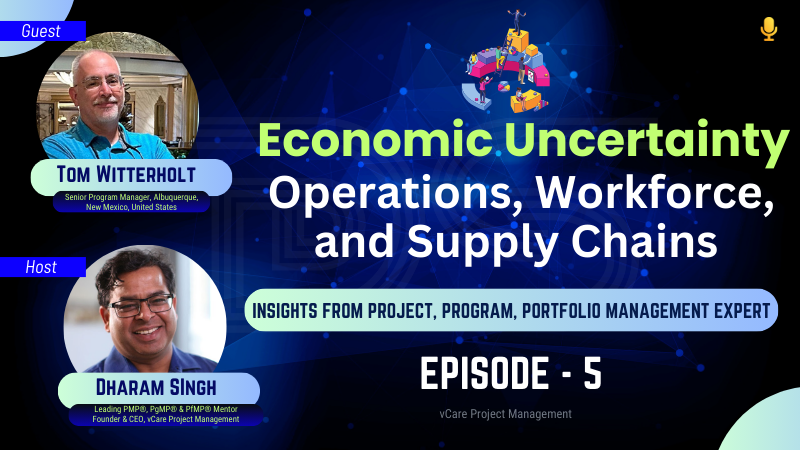


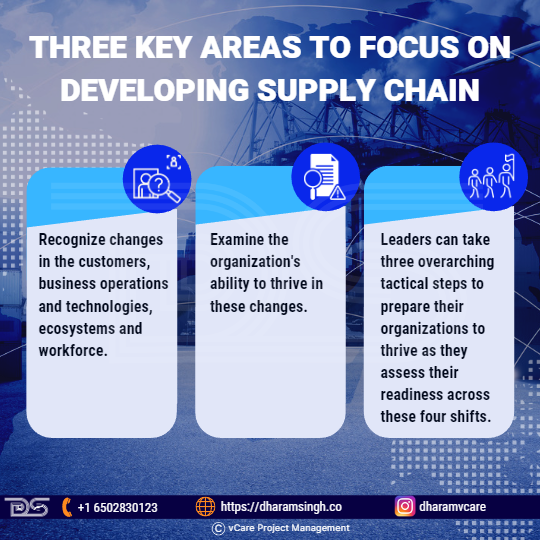
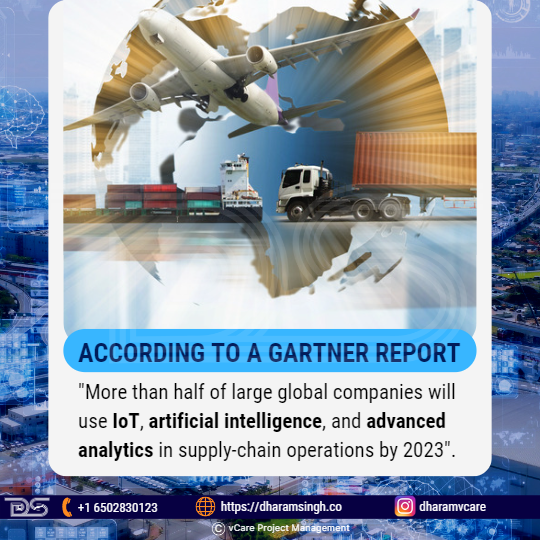

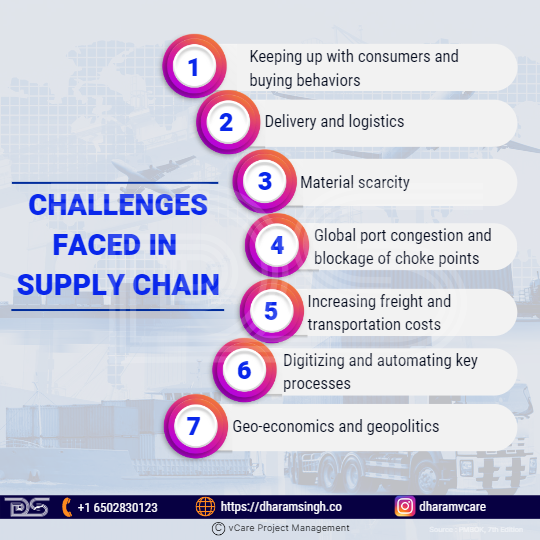
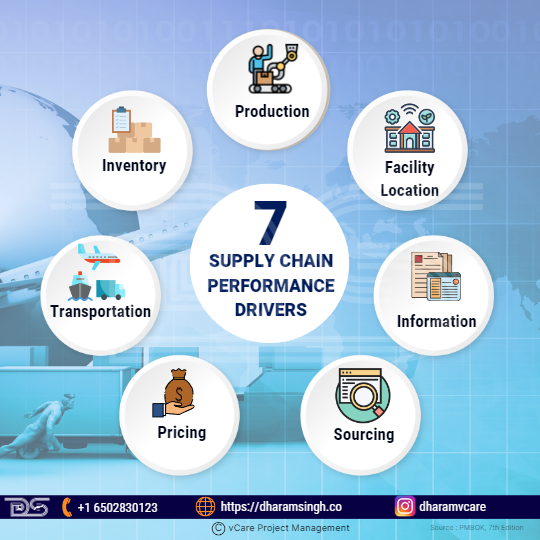
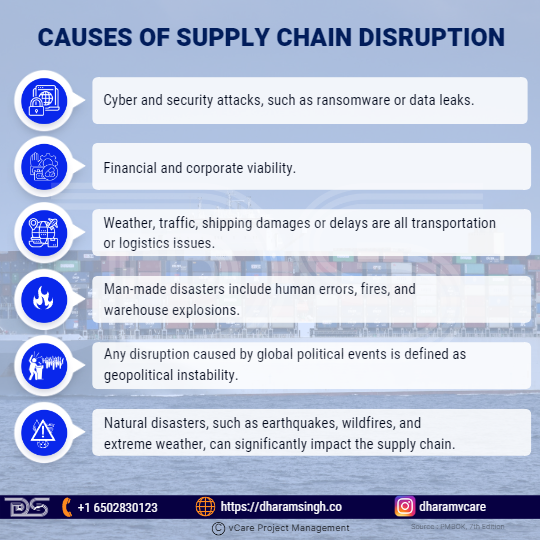
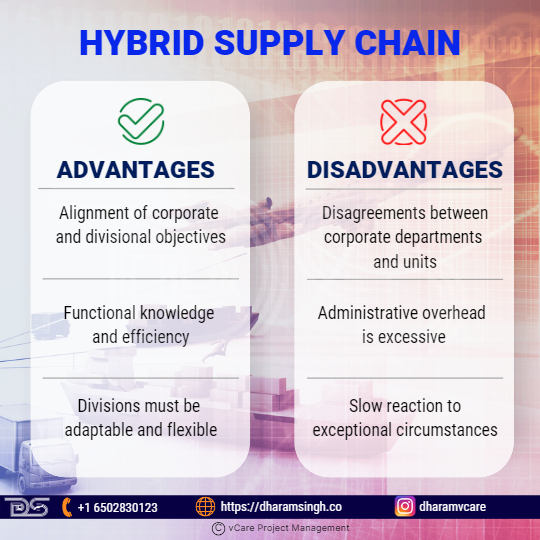

Recent Comments